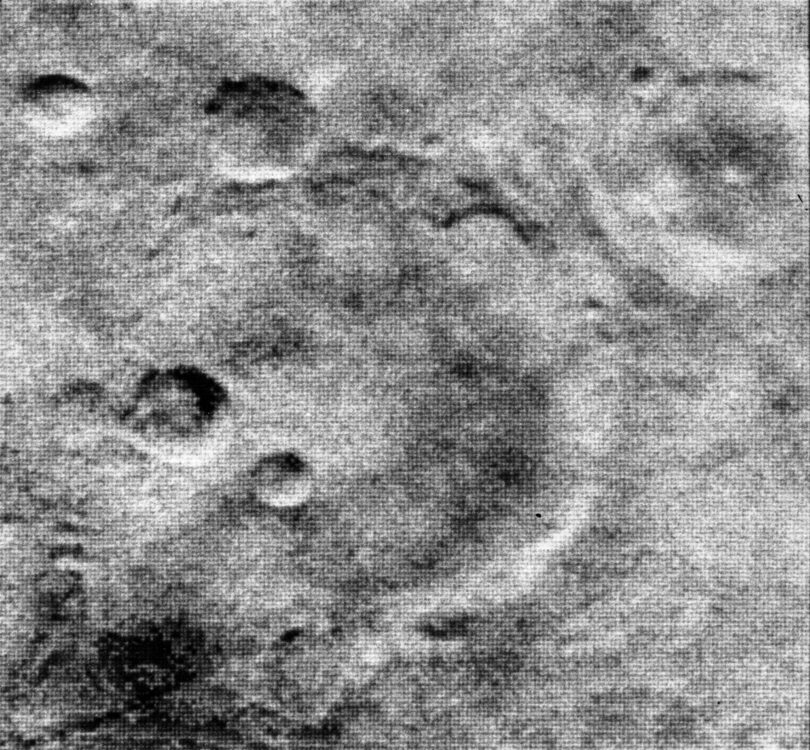Less than 40 million miles away, Mars can be observed in the night sky by the naked eye, distinguishable by a reddish tinge to its pinprick of light. Data on Mars began to be collected almost as soon as space exploration itself began; the 1964 mission aboard NASA’s Mariner 4 was the first successful flyby of Mars and captured 21 photos of the Red Planet. This mission, along with the following two successful ones, came back depicting a surface riddled with craters. For six years, Earth was under the impression that Mars’ topography was nearly identical to the Moon’s.
Revealing dormant volcanic peaks, dust storms, and massive valleys, this new data introduced a new depth to all previous assumptions about Mars.
Enter Mariner 9. This 1971 mission was wildly successful, capturing over 7,000 images of Mars from orbit over the span of nearly a year. Revealing dormant volcanic peaks, dust storms, and massive valleys, this new data introduced a new depth to all previous assumptions about Mars. In the following years, multiple spacecraft were set on course to Mars from all over the world, including the U.S., the Soviet Union (then Russia in later years), and Japan. Faith in Mars exploration efforts was low following an overwhelming number of mechanical failures and denial of the possibility of Martian life. Things started to look up in the early 2000s, when evidence of ancient water rejuvenated excitement in this neighboring planet. Perhaps if life can sustain itself then there is potential for colonization. Hundreds of spacecraft have since orbited and even touched down on Mars, some dying there and some returning — all relaying an impressive amount of data back to researchers on Earth. 2012 brought the amazing find of methane and other organic compounds on the surface, reinforcing hypotheses supporting Martian life. Only by fully examining and understanding Martian conditions will humans perhaps one day be able to populate the Red Planet.
One such condition is the massive mounds of desert sand on the planet’s surface. While evidence supports the existence of centuries-past water sources, the climate is currently as dry as a bone. Images from several missions depict flowing wave patterns in the sand continuing for miles and miles. Classified as “megaripples,” these fluctuations can be modelled by similar dune structures on Earth. After further analysis, rovers confirmed they are composed of ultra-fine particles at their base and topped with heavier, bigger particles. While on Earth, dunes are pushed by wind, the thin atmosphere of Mars means its winds were thought to be too weak to cause this effect. This weather data, the physical makeup of the sand layers, and observations spanning several years led scientists to believe that these Martian structures were stagnant and immobile memories of unimaginably intense windstorms from centuries past. As new data is constantly discovered, this theory has been challenged and overturned. An Italian study conducted over a much longer period of time, closer to a decade, found evidence of megaripple movement. Proving another similarity to Earth, these Martian ripples move at around 10 centimeters each year, which is close to the rate of the ripples in the Lut Desert of Iran. The researchers of that study hope to move forward by mapping wind intensity across the entire planet, locating both higher and lower than expected intensities.
Classified as “megaripples,” these fluctuations can be modelled by similar dune structures on Earth.
But what does this mean for Mars exploration? An extensive study from 2017, “Habitability on Early Mars and the Search for Biosignatures with the ExoMars Rover,” discusses the impacts of wind on locating organic material to use as proof of life. The timing is everything here. Loose organics being carried by the winds for any extended time are degraded by exposure to ionizing ultraviolet radiation, chemical harm, and general wear and tear. However, since all viable matter has to be protected underground, the sand shifts are essential in uncovering sites for rovers to drill into and collect samples of protected rock. Therefore, knowing that the wind exists, and hopefully in the future mapping its average intensity across the whole planet, will allow researchers to locate potential havens for gathering biological samples. Depending on the results of these future studies, we will have more insight into how life could be sustained on the red planet and what humans might need to one day survive there ourselves.
Astrobiology (2017). DOI: 10.1089%2Fast.2016.1533
Journal of Geophysical Research: Planets (2020). DOI: 10.1029/2020JE006446
Image: Mariner 4 Image of Mars (2015) https://www.nasa.gov/image-feature/mariner-4-image-of-mars
